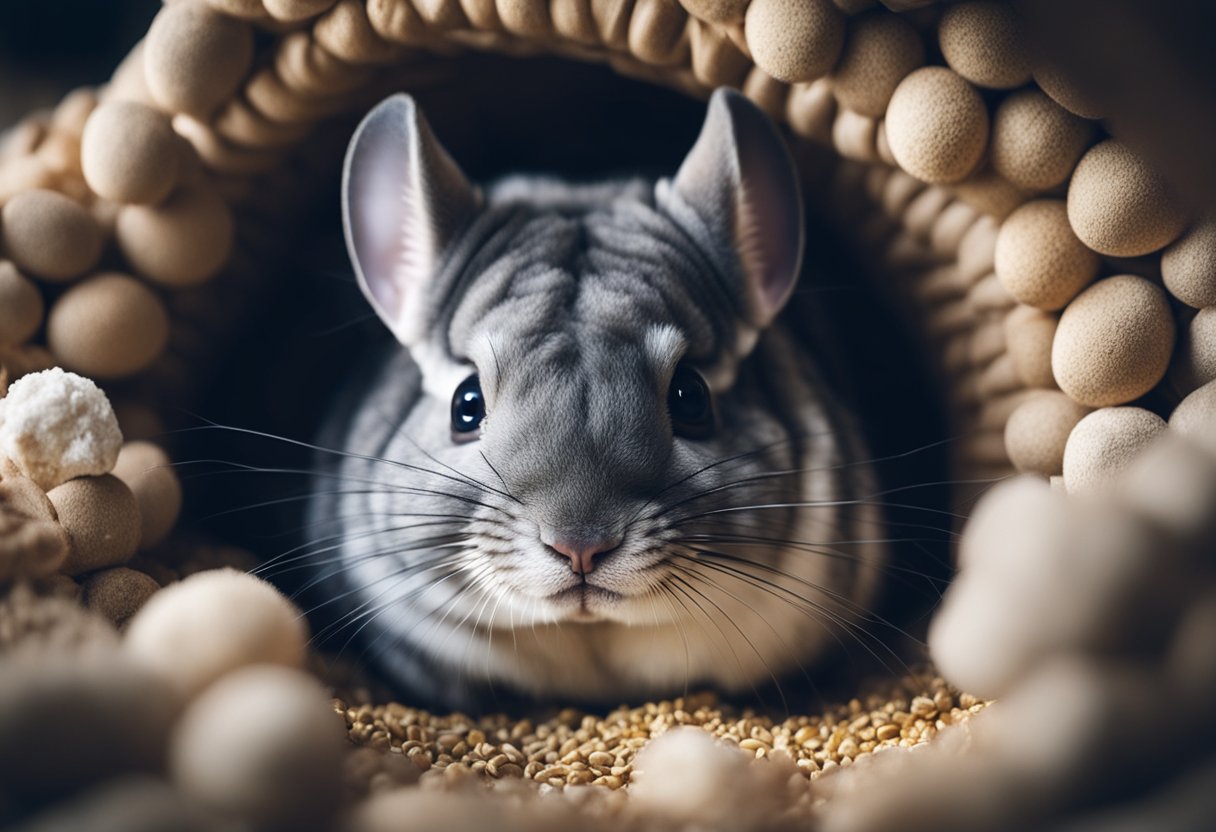Do Chinchillas Hibernate? Understanding Their Sleep Patterns and Behavior
Chinchillas are unique pets that many admire for their soft fur and playful nature. If you’re considering bringing one into your home, you might wonder about how they adapt to different weather conditions. Chinchillas do not hibernate; instead, they remain active throughout the year, regardless of the season. Understanding their behavior can help you provide the best care.

These small rodents are naturally adapted to cold environments and are known for their long periods of sleep. However, they do not enter a hibernation state like some other animals. This means that you will need to take special care of your chinchilla during colder months and ensure they have a comfortable living environment.
Caring for a chinchilla may come with its challenges, but knowing how they handle temperature changes is essential for their health. Getting the right information about their needs can lead to a happier and healthier pet experience for both you and your chinchilla.
Key Takeaways
- Chinchillas stay active all year and do not hibernate.
- They require specific care during different seasons.
- Understanding their needs is key to keeping them healthy.
Understanding Chinchilla Hibernation

Chinchillas do not hibernate like some other animals. Instead, they have unique physiological and behavioral traits that help them survive in different environments. You can learn how these adaptations play a role in their well-being.
Physiological Adaptations
Chinchillas have evolved specific traits that support their survival without hibernating. They lack the biological mechanisms that many hibernating animals possess.
Instead of entering a deep sleep, chinchillas may experience periods of torpor. Torpor is a temporary state that allows them to conserve energy in extreme conditions.
Their thick fur keeps them warm in cold temperatures. This coat helps them regulate body temperature without needing to hibernate. Proper nutrition also plays a crucial role in maintaining their energy levels year-round. A balanced diet ensures they stay healthy and active.
Behavioral Patterns
Chinchillas remain active throughout the year, including during winter. Unlike hibernators, they do not go into a prolonged sleep cycle.
Instead, they adapt their behavior based on environmental conditions. You may notice your chinchilla changing activity levels, especially in colder months. They tend to sleep longer but still wake for food and play.
It’s essential to provide a stable environment to support their natural behavior. Offering safe spaces and regular interaction can keep them engaged. Proper care ensures that your chinchilla maintains its lively demeanor without needing to hibernate.
Caring for Chinchillas in Different Seasons

When taking care of chinchillas, it’s important to consider their specific needs during different seasons. You should focus on how to regulate the temperature in their environment and provide adequate enrichment to keep them happy and healthy.
Temperature Regulation
Chinchillas are sensitive to extreme temperatures. They thrive in cooler environments, ideally between 60°F and 70°F (15°C to 21°C). During hot weather, ensure they have plenty of airflow and avoid direct sunlight. You may want to use fans or air conditioning to keep the room cool.
In winter, provide extra bedding to keep them warm. Avoid drafts and ensure their habitat is insulated. You can also use heat lamps, but position them safely to prevent overheating. Regularly check the temperature inside their enclosure with a thermometer to make sure it remains within a safe range.
Environmental Enrichment
To keep chinchillas active and mentally stimulated, you should provide various forms of enrichment throughout the year. In warmer months, introduce new toys, tunnels, and climbing structures to encourage exploration.
During colder months, ensure they have plenty of chew toys to help with dental health. Rotate toys regularly to maintain their interest. Use hay, branches, and platforms to create a fun climbing environment. This will help them stay engaged and reduce the risk of boredom-related behaviors.
By catering to their seasonal needs, you can promote a healthier and happier lifestyle for your chinchilla.
Resources

To learn more about chinchillas and their habits, consider exploring these informative links:
- Chinchilla Care: Find out the best practices for taking care of your chinchilla. You can check it out here.
- Behavioral Insights: Understand their nocturnal nature and activity patterns by visiting this guide.
- Adaptations in the Wild: Discover how chinchillas adapt to their natural environment with insights from this article here.
- Myths vs. Facts: Learn about common misconceptions regarding chinchillas and hibernation by reading this resource.
- Feeding and Care: For tips on feeding and general care, visit this site.
These resources can help you provide the best environment for your chinchilla and understand their unique behaviors. Always remember to consult with a vet for specific care needs.
Frequently Asked Questions

Many chinchilla owners have questions about their pets’ activity levels and behavior, especially during colder months. Understanding these aspects can help you provide better care for your chinchilla.
What signs indicate a chinchilla is in hibernation mode?
Chinchillas do not hibernate, so you won’t see typical signs of hibernation like those in other animals. However, if your chinchilla becomes very lethargic, stops eating, or shows signs of distress, it’s crucial to seek veterinary help.
Can a chinchilla enter a state of torpor similar to hibernation?
While chinchillas do not hibernate, they can enter a state called torpor. This temporary state is characterized by reduced metabolic activity, often due to stress, illness, or extreme cold. If this occurs, it’s essential to monitor your pet closely and consult a vet if needed.
Is it normal for chinchillas to experience periods of lower activity akin to hibernation?
Chinchillas can have periods of lower activity, especially during winter. This decrease often relates to changes in daylight hours or temperature but does not indicate true hibernation. Regular monitoring of their behavior will help ensure they remain healthy.
How can you differentiate between a chinchilla playing dead and actual hibernation?
If your chinchilla is lying still, it may just be resting, not hibernating or playing dead. Unlike hibernation, which involves a significant drop in body temperature, a chinchilla will respond quickly if you call or gently touch it. Watch for signs of responsiveness to confirm its condition.
What are the typical behaviors of chinchillas during winter months?
During winter, chinchillas may spend more time in their hides and be less active overall. They may also sleep longer. Providing a warm, safe environment is essential to help them feel comfortable as they adapt to seasonal changes.
Are there any health concerns associated with chinchillas and hibernation-like states?
Though chinchillas do not hibernate, they can experience health problems if they become too cold or stressed. Conditions like torpor could lead to serious health issues. Always keep an eye on your pet’s behavior and contact a vet if you notice significant changes.

